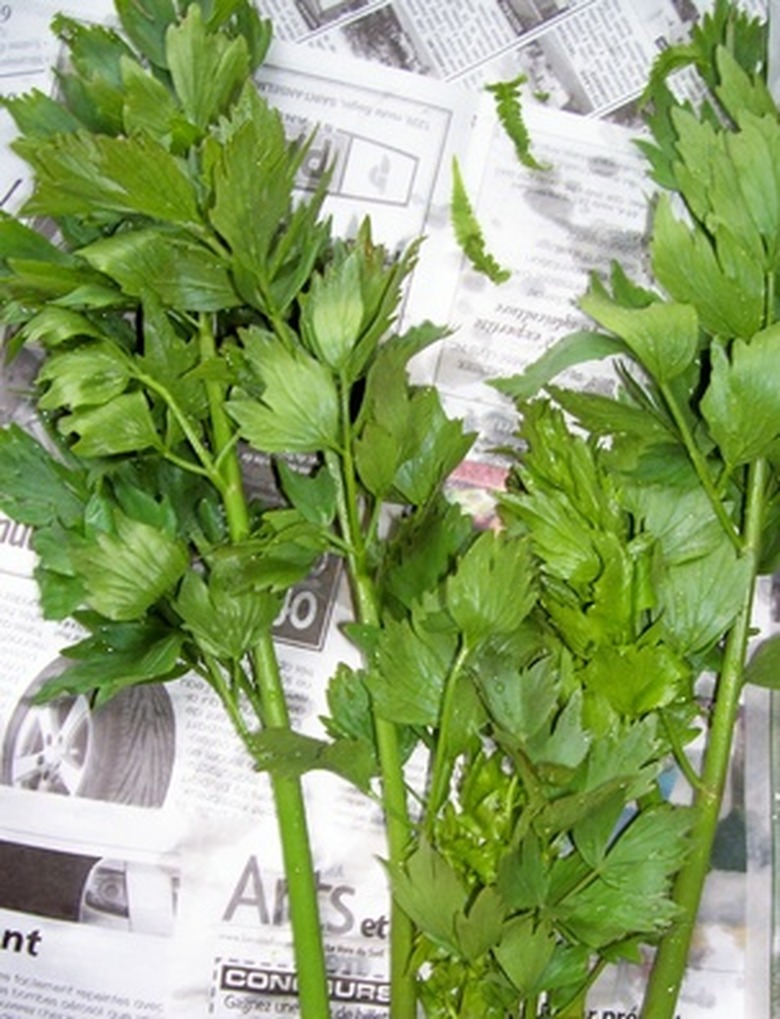Parts Of A Celery Plant
Growing celery in the home garden may require more care and time to ensure an abundant harvest, but the time is well spent since so much of the plant is useful in the kitchen. Whether you use celery cooked or raw, little goes to waste, as all of the plant is edible. Identifying the different parts of the celery plant and how they are used in the kitchen proves how versatile this plant really is.
Roots
Garden celery has shallow roots that grow just beneath the soil surface. Certain varieties of celery, such as celeriac, are grown only for their larger edible roots, but you can harvest and eat the smaller roots of common garden celery as well. The roots have a mild celery taste. Use the roots by cleaning and cutting them up then serve either raw in salads or cooked in soups and stews.
- Growing celery in the home garden may require more care and time to ensure an abundant harvest, but the time is well spent since so much of the plant is useful in the kitchen.
- Whether you use celery cooked or raw, little goes to waste, as all of the plant is edible.
Stalks
Most garden celery is grown for its large, crisp stalks. The long stalks are harvested from the base of the plant. The bottom, which was at or just beneath the soil, is white and the stalk fades to a deep green toward the top. Use the stalks chopped up in salads or cooked dishes, or serve them whole as a snack or with dips. Celery has a slightly peppery flavor and a crisp texture that is prized in many recipes.
Leaves
Celery leaves are too often forgotten and end up in the compost pile instead of on a plate. They boast the same slightly peppery flavor as the stalks and are used fresh as a garnish on plates or in soups. Replace parsley in recipes with the more flavorful celery leaves, if desired. Celery leaves are also an acceptable substitution for cilantro if you prefer a milder taste in your food. Celery leaves are most often used fresh, but they can be dried or frozen if their appearance isn't an issue.
- Most garden celery is grown for its large, crisp stalks.
- Celery leaves are also an acceptable substitution for cilantro if you prefer a milder taste in your food.
Flowers and Seeds
Garden celery is usually harvested while the stalks are crisp and before the plants flower. If allowed to flower, celery produces small white flowers. Once a plant has flowered, the stalks become woody and are no longer used in the kitchen. If you leave celery in the garden long enough to flower, it will then produce seeds. Harvest the seeds after the flowers have wilted and dried. Use the seeds whole or ground up to add a slight celery taste to nearly any recipe.
